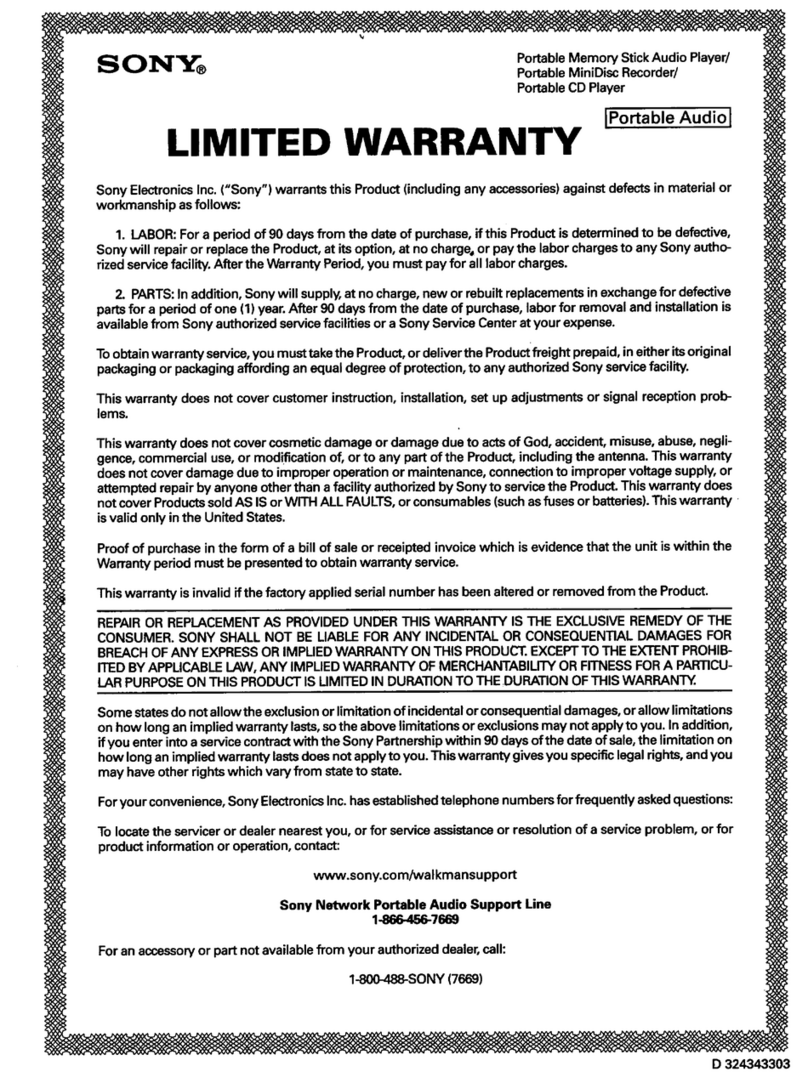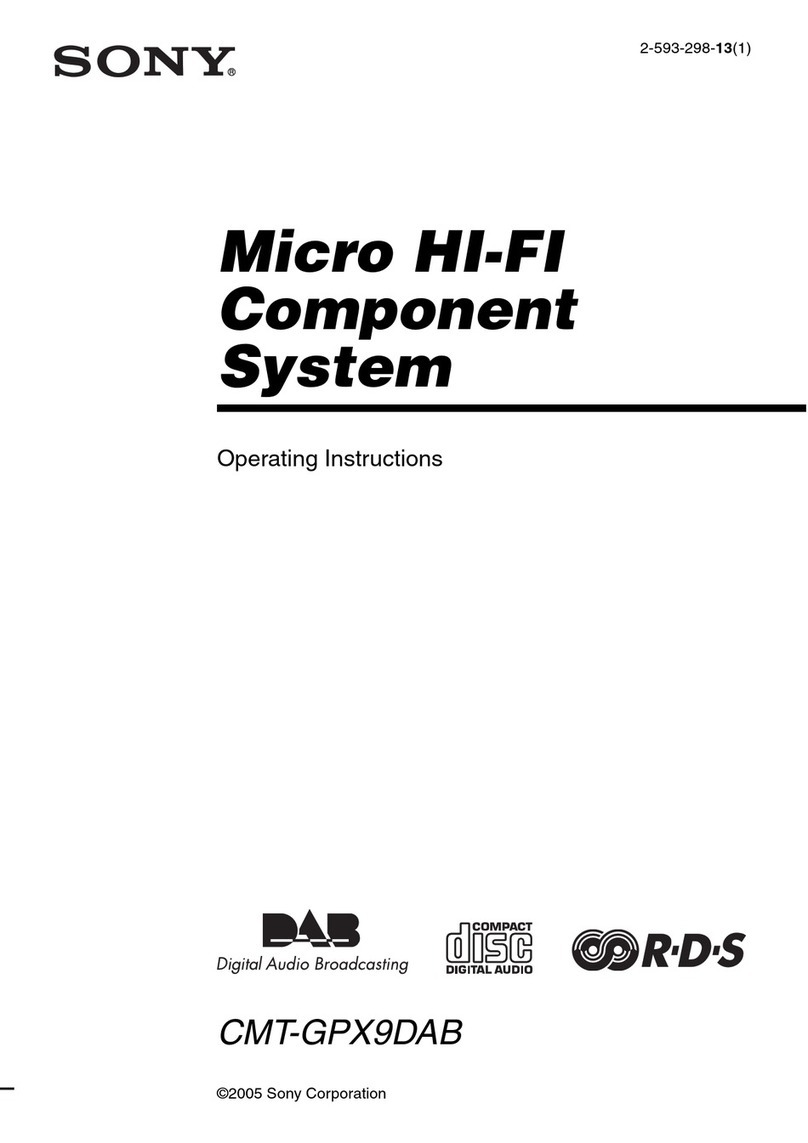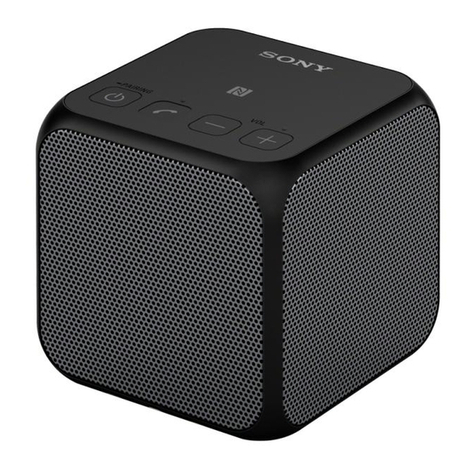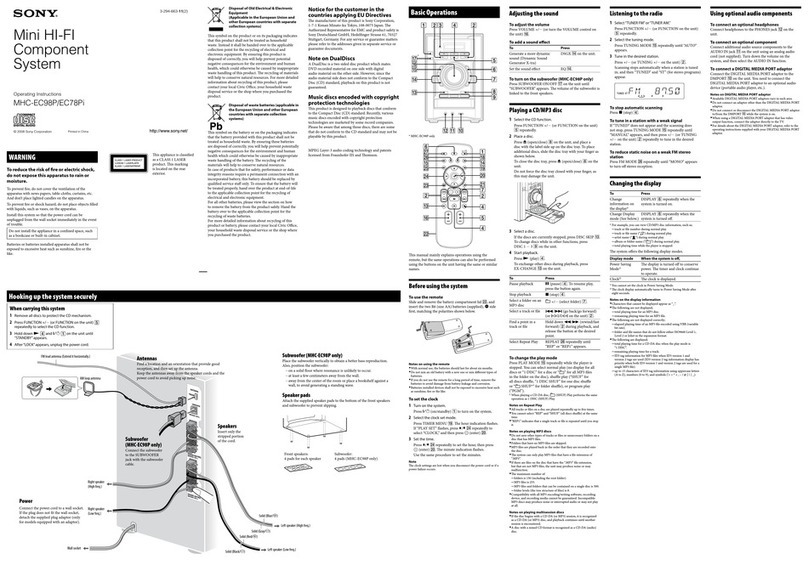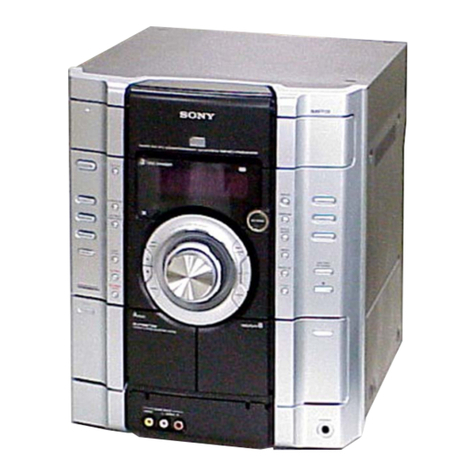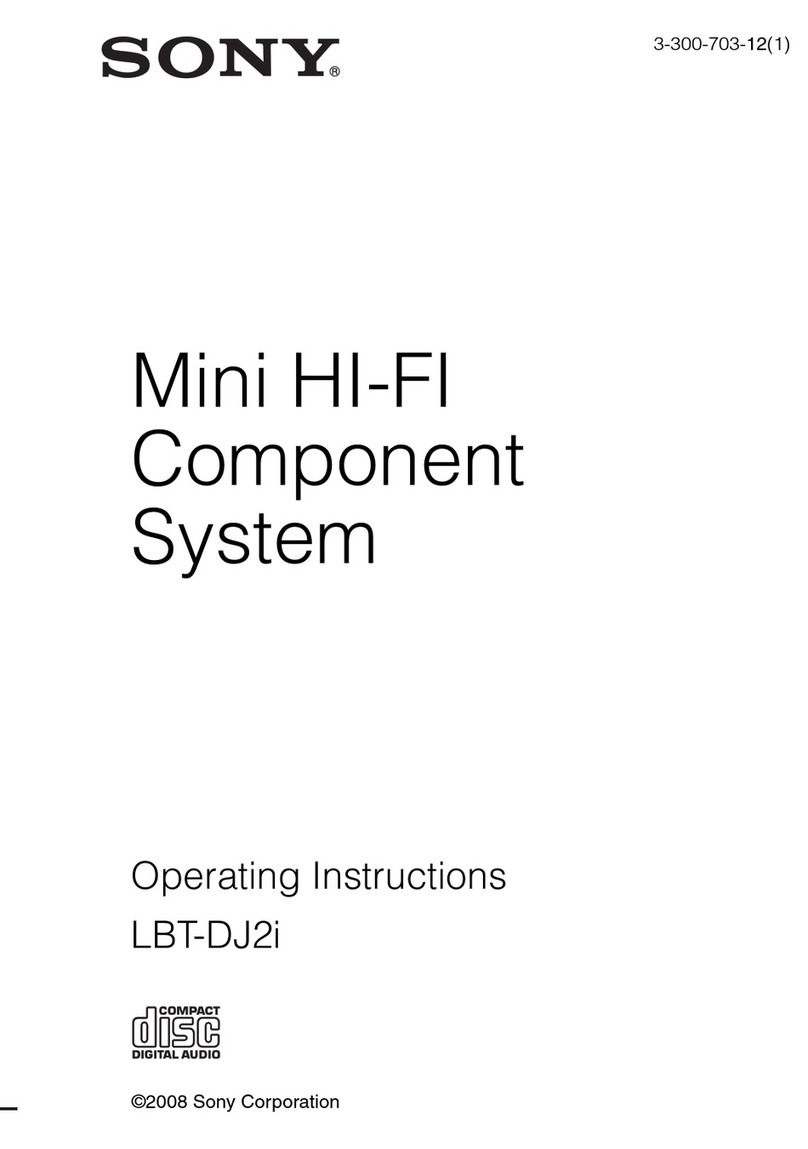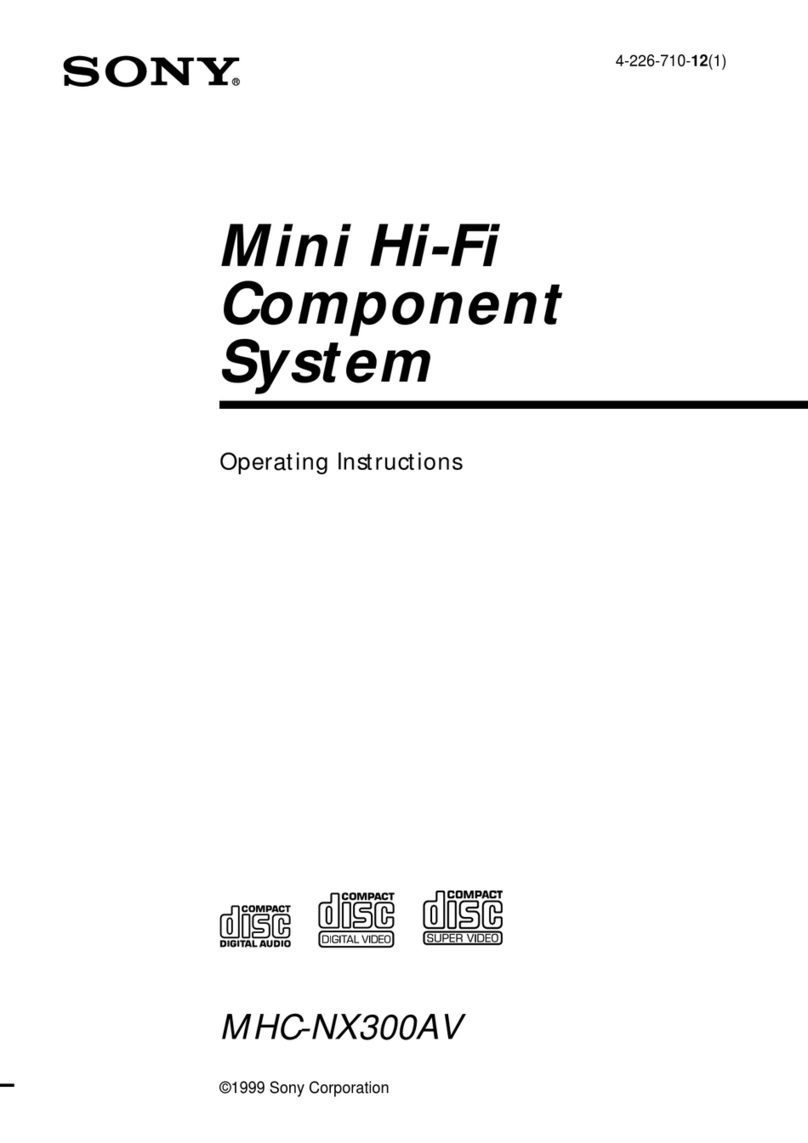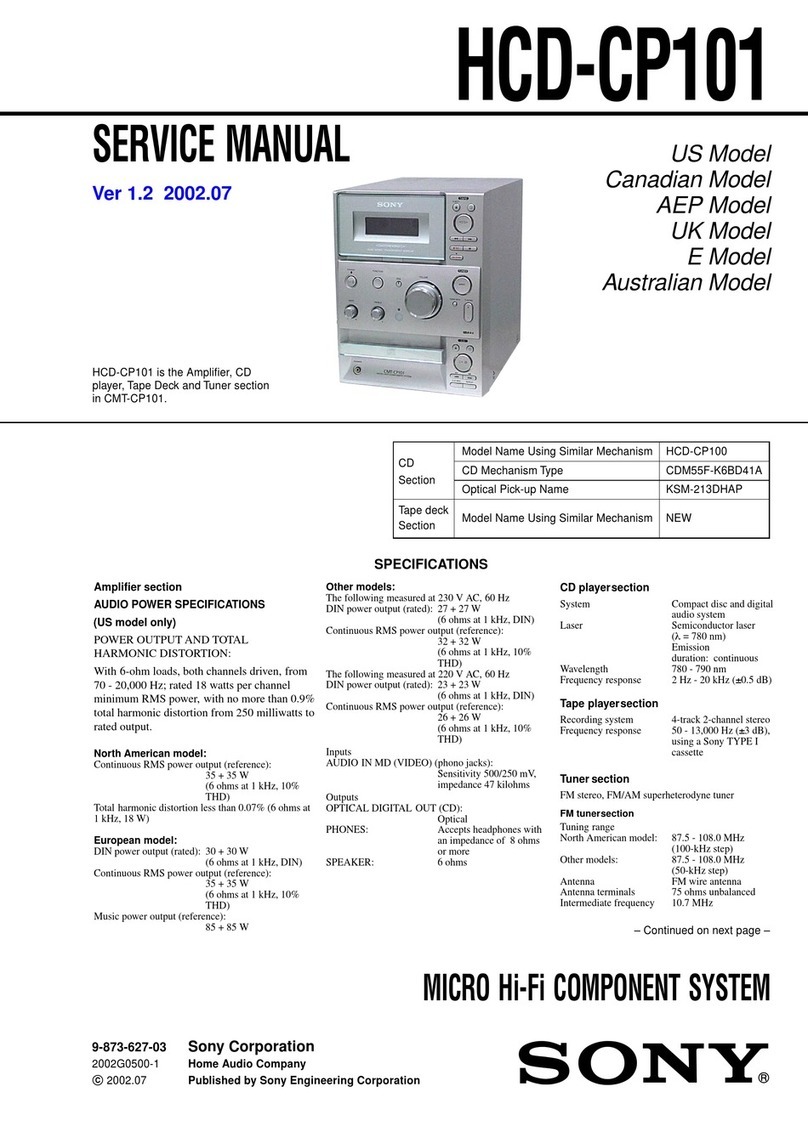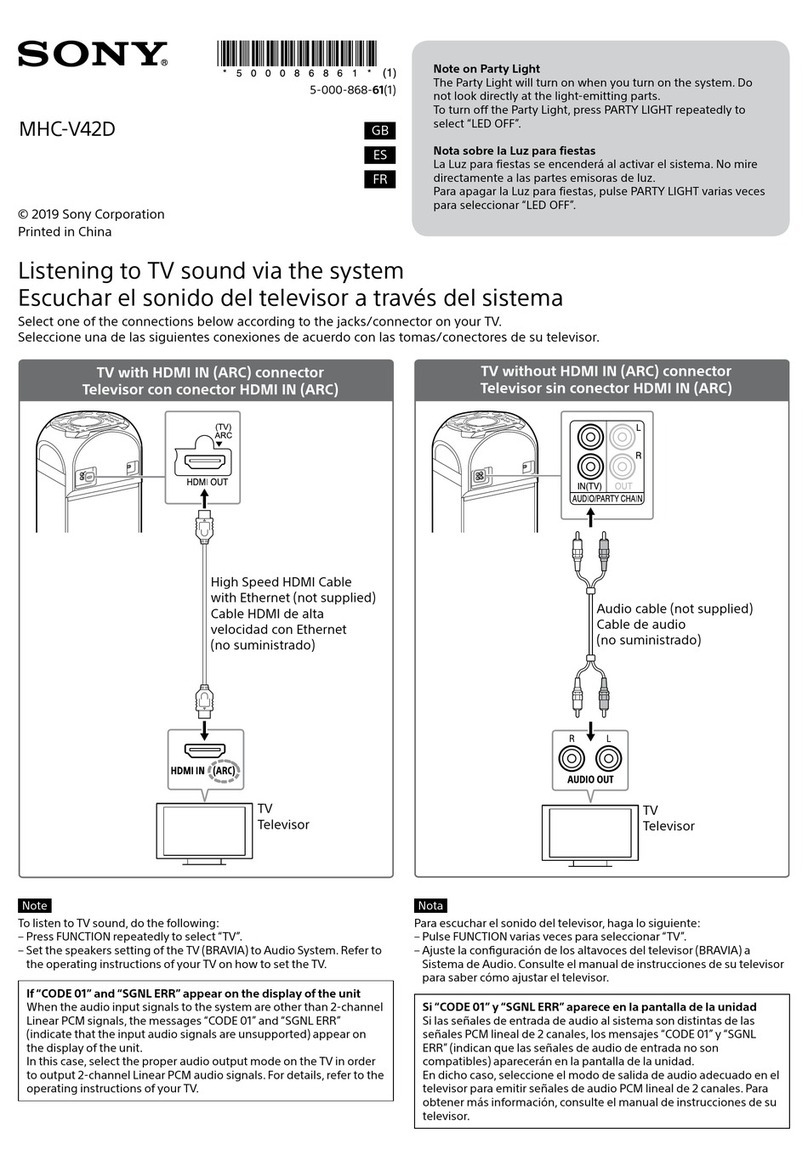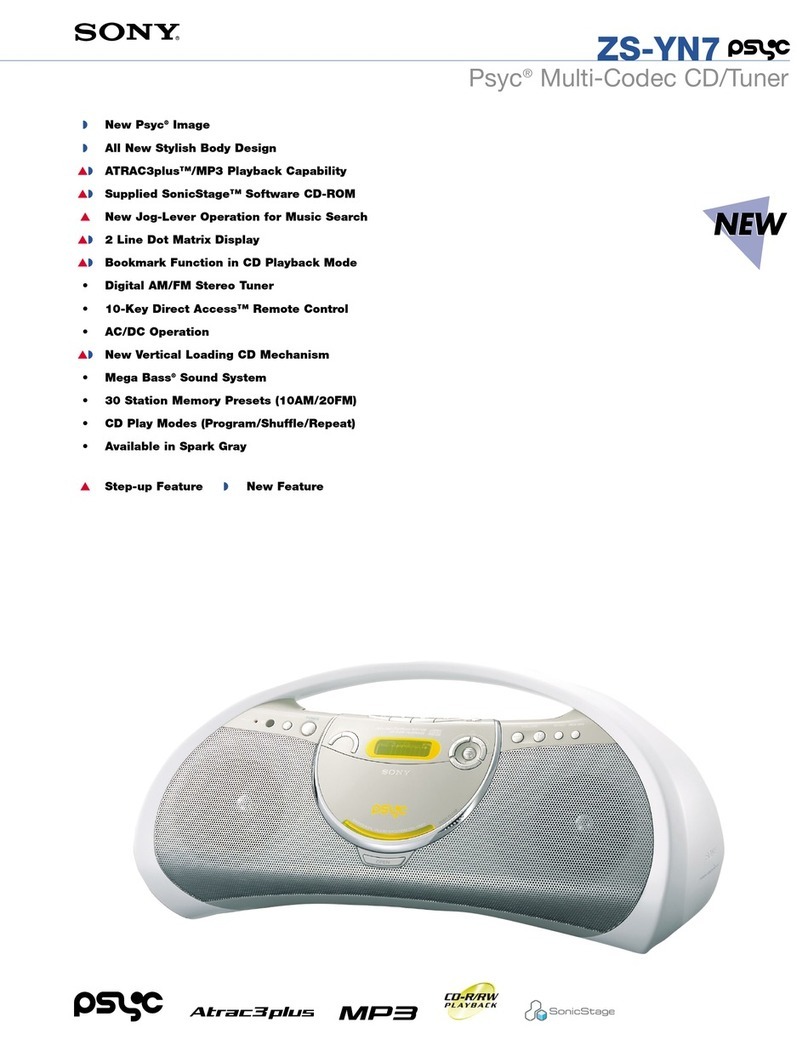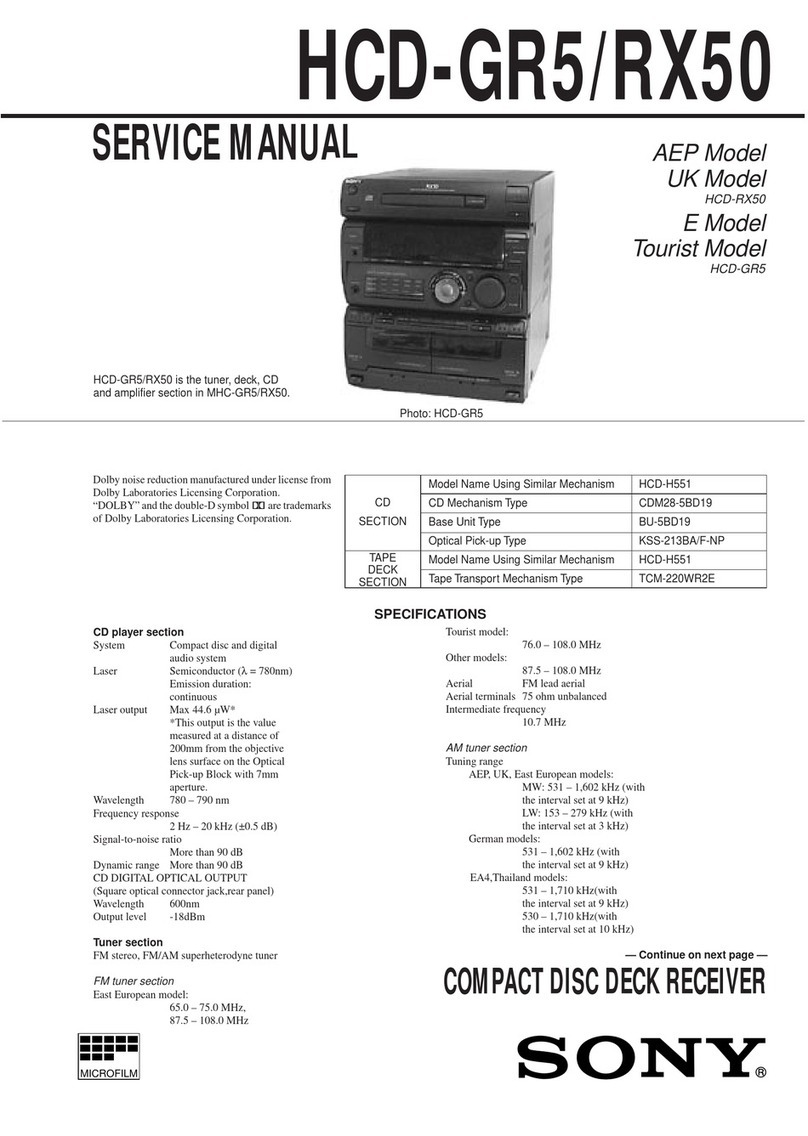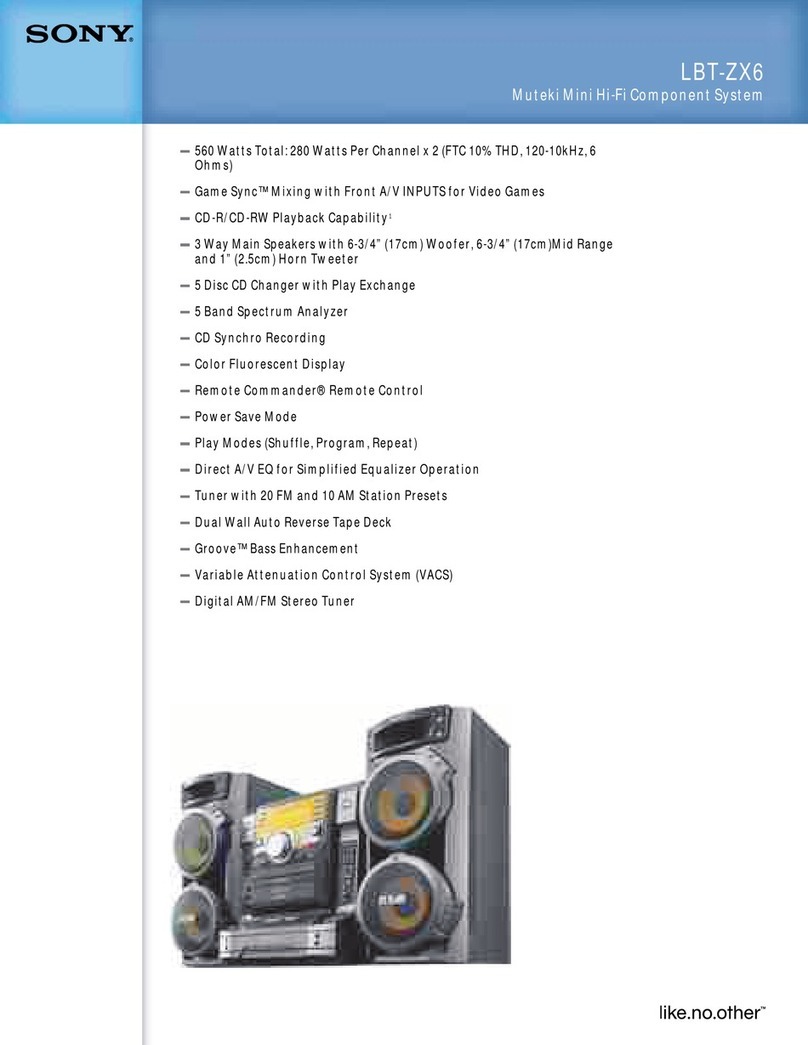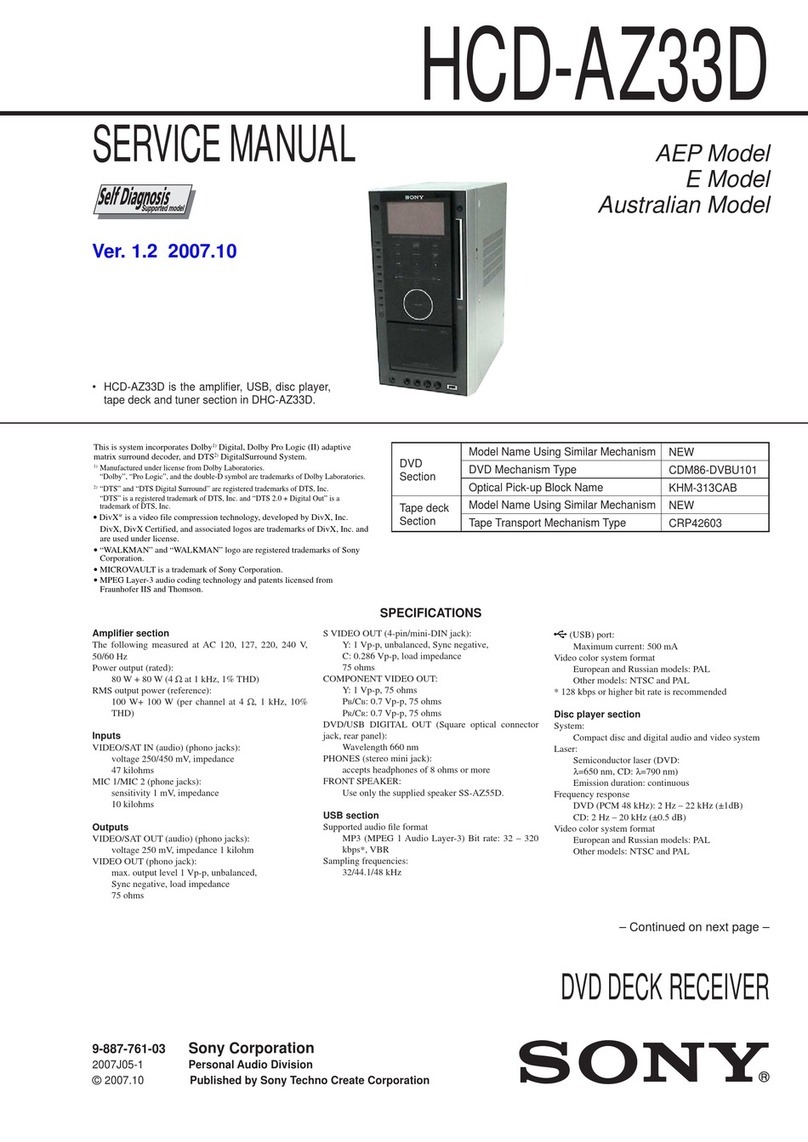
3
HCD-DX50/RG80
TABLE OF CONTENTS
1. GENERAL ·········································································· 4
2. DISASSEMBLY······························································· 7
3. TEST MODE ···································································· 12
4. MECHANICAL ADJUSTMENTS ····························· 14
5. ELECTRICAL ADJUSTMENTS ······························· 14
6. DIAGRAMS
6-1. Circuit Board Location ················································· 20
6-2. Block Diagrams ···························································· 21
6-3. Schematic Diagram Main Section (1/4) ···················· 23
6-4. Schematic Diagram Main Section (2/4) ···················· 24
6-5. Schematic Diagram Main Section (3/4) ···················· 25
6-6. Schematic Diagram Main Section (4/4) ···················· 26
6-7. Printed Wiring Board Main Section ·························· 27
6-8. Schematic Diagram BD Section ································ 28
6-9. Printed Wiring Board BD Section ····························· 29
6-10. Schematic Diagram AMP Section ··························· 30
6-11. Printed Wiring Board AMP Section························· 31
6-12. Schematic Diagram Panel Section ··························· 32
6-13. Printed Wiring Board Panel Section ························ 33
6-14. Schematic Diagram Panel SW Section ···················· 34
6-15. Printed Wiring Board Panel SW Section ················· 35
6-16. Schematic Diagram Leaf SW Section ····················· 36
6-17. Printed Wiring Board Leaf SW Section ··················· 37
6-18. Schematic Diagram Driver Section ························· 38
6-19. Printed Wiring Board Driver Section ······················· 39
6-20. Schematic Diagram Trans Section ··························· 40
6-21. Printed Wiring Board Trans Section ························ 41
6-22. Printed Wiring Board Switch Section ······················ 42
6-23. IC Pin Function Description ······································· 42
6-24. IC Block Diagrams ····················································· 45
7. EXPLODED VIEWS
7-1. Cabinet Section ····························································· 47
7-2. Front Panel Section······················································· 48
7-3. Main Board Section ······················································ 49
7-4. Tape Mechanism Section-1 (TCM-230PWR41C)········ 50
7-5. Tape Mechanism Section-2 (TCM-230PWR41C)········ 51
7-6. CD Mechanism Deck Section (CDM58E-30BD60) ···· 52
7-7. Base Unit Section (BU-30BD60) ································· 53
8. ELECTRICAL PARTS LIST ······································· 54
SAFETY CHECK-OUT
After correcting the original service problem, perform the
following safety checks before releasing the set to the customer:
Checktheantennaterminals,metaltrim,“metallized”knobs,screws,
and all other exposed metal parts forAC leakage. Check leakage as
described below.
LEAKAGE
TheAC leakage from any exposed metal part to earth ground and
from all exposed metal parts to any exposed metal part having a
return to chassis, must not exceed 0.5 mA (500 microampers).
Leakage current can be measured by any one of three methods.
1. A commercial leakage tester, such as the Simpson 229 or RCA
WT-540A. Follow the manufacturers’instructions to use these
instruments.
2. A battery-operated AC milliammeter. The Data Precision 245
digital multimeter is suitable for this job.
3. Measuring the voltage drop across a resistor by means of a
VOM or battery-operatedAC voltmeter. The “limit”indication
is 0.75V, so analog meters must have an accurate low-voltage
scale.The Simpson 250 and Sanwa SH-63Trd are examples of
a passive VOM that is suitable. Nearly all battery operated
digital multimeters that have a 2VAC range are suitable. (See
Fig. A)
Earth Ground
AC
voltmeter
(0.75V)
1.5kΩ
0.15µF
Fig. A. Using an AC voltmeter to check AC leakage.
To Exposed Metal
Parts on Set
MODEL IDENTIFICATION
—BACK PANEL —
MODEL
DX50 : E, SP, AR models
DX50 : KR, MX, AUS/RG80 models
PARTS No.
4-231-580-0s
4-231-580-2s
•Abbreviation
AUS : Australian model
SP : Singapore model
KR : Korea model
PARTS No.
MX : Mexican model
AR : Argentina model

